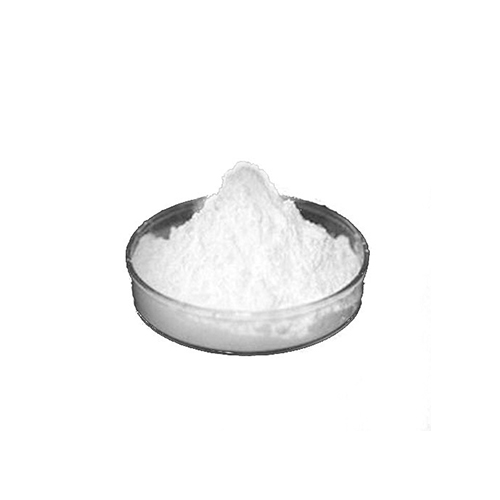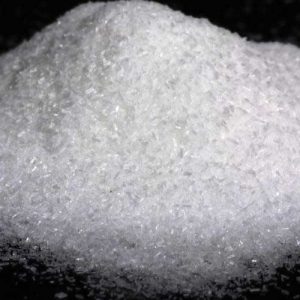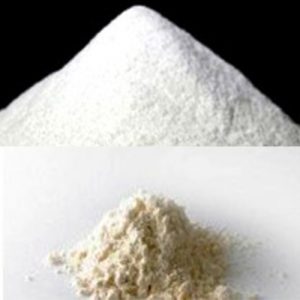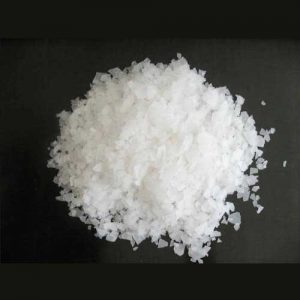- Have any questions?
- 91-22-23726950
- 91-22-23774610

Calcium Magnesium Acetate-CMA
May 10, 2019
Chromium Oxalate
May 10, 2019Calcium Saccharin
Muby Chemicals established in the year 1976, is pioneer in Manufacturing Chemicals for Oil and Gas Exploration, Hydraulic Fracturing (Fracking) and coiled tube Chemicals.Our advanced chemistry leading to an innovative and high-performance product range is coupled with effective on and off site management services.
We are manufacturer of Specialty chemicals, Pharmaceutical Excipients, Fragrance & Flavorchemicals in India, which are of IP, BP, USP, Ph. Eur., FCC or Food Grade, ACS, AR or Analytical Reagent Grade, LR or Laboratory Reagent Grade, Pure and Technical Grades of various chemicals.
Saccharin is primarily produced in two types i.e. soluble and insoluble saccharin. The soluble saccharin (in water) is called Sodium Saccharin whereas insoluble saccharin is called Insoluble Saccharin. Calcium Saccharin, is also sometimes used, especially by people restricting their dietary sodium intake. Calcium Saccharin is a sweeteners that has been used in food for many years. In cosmetics and personal care products, Calcium Saccharin is used as flavoring agents in the formulation of dental products, mouthwashes and lipstick.
General Specifications of Calcium Saccharin:
Appearance: white crystal or powder
Purity: 98% min.
Melting point: 226C – 230C
Moisture: 15% max.
Arsenic: 0.0003% max.
Heavy metals: 0.001% max.
Arsenous salt: 0.0002% max.
Selenium: 0.003% max.
Saccharin Sodium USP NF is also offered. As per the monograph of Saccharin Sodium USP NF its content analyses between 99 to 101% assay and meets the requirement of trace impurities specified in the monograph.
Calcium Saccharin FCC Food Grade
1,2-Benzisothiazolin-3-one 1,1-Dioxide Calcium Salt
C14H8CaN2O6S2-31⁄2H2O Formula wt 467.48
INS: 954 CAS: anhydrous [6485-34-3]
DESCRIPTION
Calcium Saccharin occurs as white crystals or as a white, crystalline powder. One gram is soluble in 1.5 mL of water.
Function: Nonnutritive sweetener.
REQUIREMENTS
Identification:
A. Dissolve about 100 mg of sample in 5 mL of a 1:20 solution of sodium hydroxide, evaporate to dryness, and gently fuse the residue over a small flame until ammonia no longer evolves. After the residue has cooled, dissolve it in 20 mL of water, neutralize the solution with 2.7 N hydrochloric acid, and filter. Add 1 drop of ferric chloride to the filtrate. A violet color appears.
B. Mix 20 mg of sample with 40 mg of resorcinol, cautiously add 10 drops of sulfuric acid, and heat the mixture in a liquid bath at 200C for 3 min. After cooling, add 10 mL of water and an excess of 1 N sodium hydroxide. A fluorescent green liquid results.
C. A1:10 aqueous solution gives positive tests for Calcium.
D. Add 1 mL of hydrochloric acid to 10 mL of a 1:10 aqueous solution. A crystalline precipitate of saccharin forms. Wash the precipitate well with cold water, and dry at 105C for 2 h. The saccharin thus obtained melts between 226C and 230°C.
Assay: Not less than 98.0% and not more than 101.0% of C14H8CaN2O6S2, calculated on the anhydrous basis.
Benzoate and Salicylate: Passes test.
Lead: Not more than 2 mg/kg.
Readily Carbonizable Substances: Passes test.
Selenium: Not more than 0.003%.
Toluenesulfonamides: Not more than 0.0025%.
Water: Not more than 15.0%.




